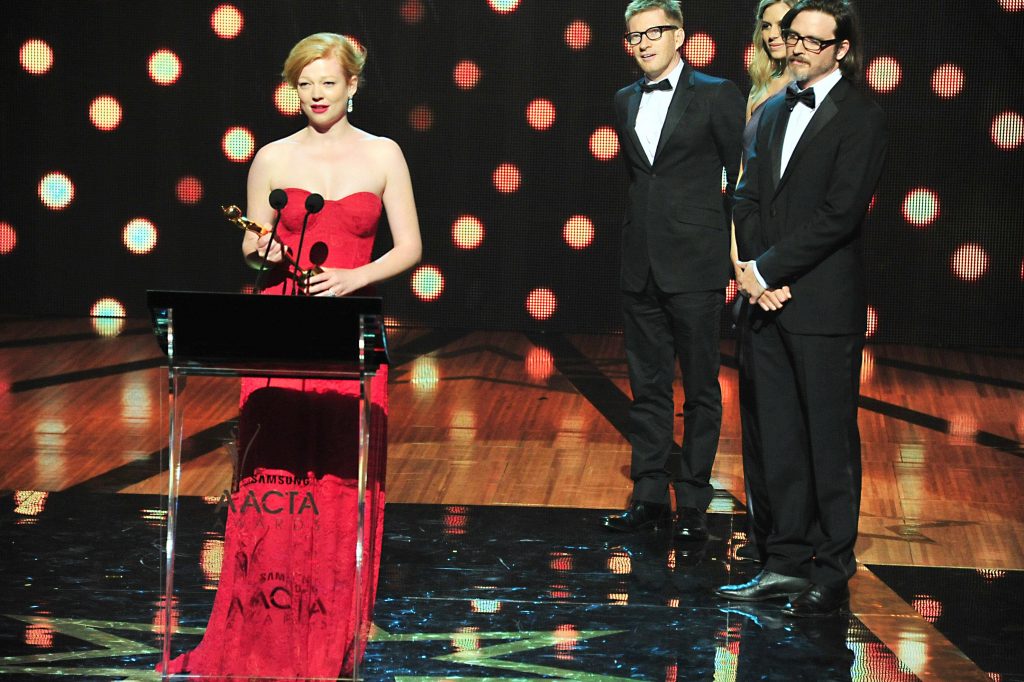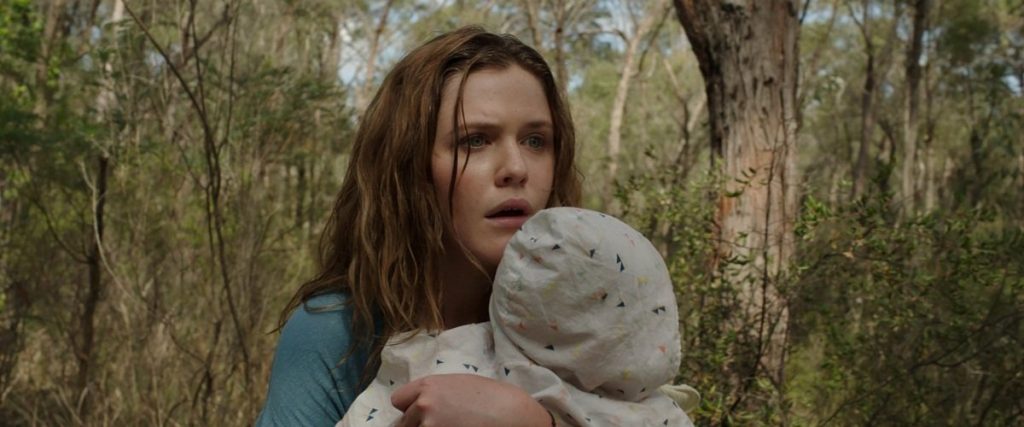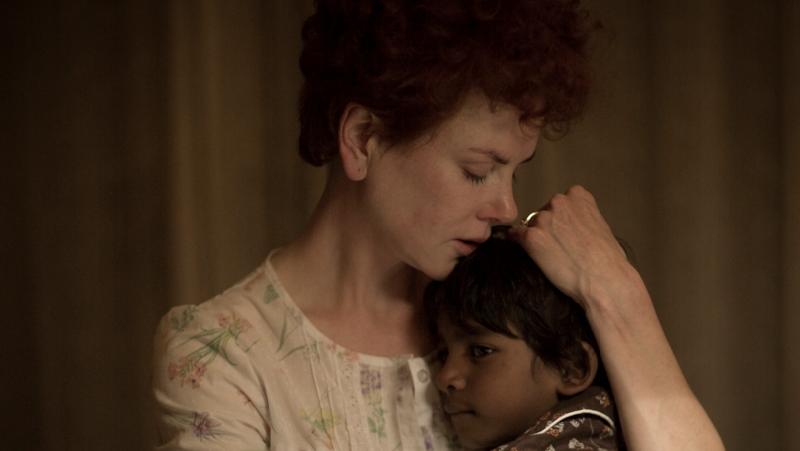So, the 7th annual AACTA Awards ceremony came and went. The ceremony was spread out over two days, with a delayed screening running on Channel 7, followed by a repeat screening to be run on Foxtel at a later date. For those following the game, they would have been well aware of the fact that Australian cinemas night of nights was occurring. However, for the general public, this particular awards ceremony may be low down on their radar.
‘The Aussie Oscars’ went through a change seven years ago. In 2011, the Australian Film Institute (AFI) changed its name to the Australian Academy of Cinema and Television Arts (AACTA). The AFI Awards were established in 1969 and it took a few years before it morphed into the traditional awards format that we’re used to. Naturally, there has been a great celebration of Australian cinema throughout the years, with everything from the war classic Breaker Morant to the fantasy flick The Navigator: A Medieval Odyssey winning the big prize, so one has to ask… why the change to AACTA?
The official line was that there was a desire to ‘create awareness for Australian film in local and international markets’. Alongside a membership restructure, ‘reboot mode’ was taking place. Geoffrey Rush was installed as Academy President. To be eligible, a film needs to have screened for seven consecutive days in at least two Australian states. On top of that, production companies need to pay an entry fee to simply be considered – up to $AU1680 for a feature film, $AU400 for documentaries, $AU330 for short and animated films, and $AU1125 for all television categories.
It’s no secret that Australian audiences view Australian cinema like it’s the plague. Australians simply rarely go to see outwardly Australian films, no matter how great they are. Let me clarify that for you, in the 2000’s, Aussies were rarely going to see films that were fuelled by a eminently strine sound. And, on top of that, purely Australian films were failing to make an impact internationally. Sure, films like Happy Feet and Australia garnered Oscar attention, but if you asked anybody on the street, they’d swear black and blue that they were not Australian films. I’ve had endless amounts of conversations with folks about the Australian-ess of films, explaining that films like Hacksaw Ridge or The Great Gatsby were indeed Australian films, only to be met with ‘no way’ or ‘they can’t be’.
Two questions are raised when it comes to Australian cinema. What makes a film Australian? And, in turn, what is the role of the AACTA Awards in rewarding Australian cinema?
2017’s major winner, Garth Davis’ Lion, swept the ceremony – winning every category it was nominated in. Producer Angie Fielder had this to say upon winning the Best Picture award:
As a film that was partly financed by the Weinstein Company, it would be remiss of us not to acknowledge the incredible bravery of the women and men who have come forward to break the silence about sexual harassment and assault in our industry.
Sexual assaults aside, and financiers names excluded, the part I want to circle out was that a non-Australian company helped finance the film. A fair amount of Lion was filmed in Australia, with a predominantly Australian cast and crew, but that alone doesn’t qualify it as an Australian film. Dev Patel does a killer Australian accent – I challenge you to find a better non-Australian actor throwing down the Aussie twang – and Nicole Kidman and David Wenham provide a caring, supportive backbone to a beautiful tale. It’s a powerful film that reinforces the text book idea of ‘what it means to be Australian’ – meaning, looking out for other people, caring for others, and all round being supportive, nice guys. But, if a film were just to portray Australian values or contain Australian actors, just to be considered Australian, then we’d be claiming a heck of a lot of films. After all, we’ll gladly claim anybody who buys a house here as our own.
Almost immediately on the strength of Lion, Garth Davis had secured his next film – a retelling of the story of Mary Magdalene with his Lion co-star Rooney Mara in the titular role. So, one has to ask, have the AACTA Awards simply become a further calling card for actors and directors to make their way to the great holy land of cinema – the United States of America?
Jackie Weaver and Ben Mendelsohn famously garnered late career boosting attention via the superb Animal Kingdom. Weaver got an Oscar nomination for her work, and went on to work with directors like David O. Russell. Mendelsohn eventually went on to star as the villain in a Star Wars film. In turn, well established directors like Baz Luhrmann and Mel Gibson both were greatly rewarded for the definitely non-Australian tales, The Great Gatsby and Hacksaw Ridge, respectively.
It’s great to see Australian actors and directors succeeding internationally, but should the AACTA Awards be a field where we reward stories that are, for all intents and purposes, are purely American stories? Mel Gibson famously brought the production of Hacksaw Ridge to Australia because nobody would fund his war epic, and by making it in Australia he was able to gain support from the Australian government through Screen Australia. Hacksaw Ridge managed to get Gibson an Oscar nomination – essentially Hollywood’s way of saying ‘we accept you, and you’re fine to work here again’ after his abusive outburst in the 2000’s.
Then, of course, the ‘Great American Novel’ – The Great Gatsby – was adapted in Australia (of all places!) and walked away with the Best Film prize that year. It featured only a handful of Australian actors, but the crew behind the scenes were wholly Australian. Baz Luhrmann’s ability to create a commercially successful film that employs Australians surely needs to be rewarded.
But, if Luhrmann is to be rewarded for employing Australian crew members, then surely Taika Waititi’s Thor: Ragnarok or Ridley Scott’s Alien: Covenant should be considered for the top prize too? They too feature a wide amount of Australian talent behind the scenes, and were filmed in Australia, and were assisted by a welcome financial boost from the Australian government. And, just like Hacksaw Ridge and The Great Gatsby, they are hardly Australian tales. (I mean, yes, all Australian men and women are just like Chris Hemsworth and Tessa Thompson, that’s a given, but we don’t use electric hammers is all.)
If there’s one thing that’s for certain, ever since the AFI Awards changed their name to the AACTA Awards, and the behind the scenes makeup of the academy did their job, Australian films have certainly been garnering greater attention internationally. Even if the films themselves don’t make an impact, the people in them definitely are.
Mad Max: Fury Road and The Babadook would have been successful regardless of whether they won AACTA awards or not – they are simply that great. So, the AACTA Awards can’t take credit for their international success. The same year of The Babadook, the Spierig Brothers brought the talent of Sarah Snook to the attention of the world with Predestination. Arguably, the success of that film at the AACTA Awards (as it failed at the Australian box office) helped push Snook into international attention, with her subsequent casting in films like The Glass Castle and Steve Jobs.


CONCERT HALL, SYDNEY OPERA HOUSE
TUESDAY 31ST JANUARY, 2012
PHOTOGRAPHER: BELINDA ROLLAND © 2012
If we look back at the AFI-era winning films, there’s nary an non-Australian focused film in sight. Before 2010, true blue, Aussie yarns came out on top at the ceremony. They were unmistakably Australian stories that reflected an Australian society.
But, let’s go back to the fact that Australian audiences simply don’t attend Australian films in the same levels that they would international films. Crocodile Dundee is still safely the highest grossing Australian film of all time, and it doesn’t look like there will ever be a true challenger to that title for a long while.
With the Academy Awards, the Best Picture winner becomes a house hold name. People seek it out because it won ‘The Oscar’. But, with the AACTA Awards, it’s questionable whether non-film focused folks in Australia would actually remember what won Best Picture last year. Within Australia, we regularly get hot under the collar about the Logies or the Aria awards, and it’s all fun and laughter on the night, but a week or two later, nobody would remember who walked away with the big prizes. Arguably, many more would be able to name who won the Brownlow medal five years ago compared to who walked away with Best Album, the Gold Logie or Best Picture at the respective ceremonies. Go on, test yourself if you can remember any of those winners*.
Internationally, the winners of the AACTA Awards make few waves. Sure, Variety may run an article or two, but nobody is talking about the AACTA Awards in the same way that they may talk about the BAFTA Awards, or the Berlin Film Festival. Mostly because the AACTA Awards feel like an afterthought compared to all the other awards ceremonies out there. After all, Hacksaw Ridge competed with Lion at the 89th Academy Awards. So, the hype train for Lion has already long passed.
If the key aim of the AACTA Awards is to highlight and promote Australian cinema in local and international markets, then what can they do to help expose more eyes to Australian cinema?
This feels like a trick question, mostly because there are layers of complexity within it. One of the key ways of getting people interested in Australian cinema is to… create great Australian cinema. Ok, great. We’re already doing that in droves. Next step is for folks to have hype built around Australian films, or rather, a great box office receipt.
A pet peeve of mine is the fact that many Australian films will launch internationally long before Australian audiences have a chance to see them. But, I’m selfish. I love Australian cinema, and heck, I want to be able to see Australian cinema first. Films like Hounds of Love, Lion and Killing Ground all had international releases before launching in Australia. Arguably, the word of mouth from Hounds of Love helped boost the box office for the film here in Australia. Ben Young made a great film, but one has to look at the damp box office reception that Snowtown received to realise that Australian audiences aren’t exactly champing at the bit to watch a serial killer story.
Australia does have a piracy problem – it’s undeniable. And so, when an Australian film launches internationally on streaming services first – as in the case of Killing Ground – many turn to their local torrent service to unashamedly steal the latest Aussie flick. The Mule tackled this issue wonderfully years ago by releasing the film in an affordable, timely format. Smashing the piracy problem is difficult, and one that needs a huge industry overhaul that will take a while. It’ll happen, but it’ll happen slowly.
So, releasing internationally helps international and Australian audiences realise that hey, this country down under, they do some ok stuff. Word of mouth and gradual hype helps build awareness for film, allowing anticipation to bubble away in the background. Yeah, I’ll whinge about Canada getting to see Breath before Australia does, but if it helps international audiences become aware that the film exists, then so be it.
But what about the smaller films that fail to even get a cinema run? If you looked at the potential nominees for this years AACTA Awards, odds are you may have scratched your head at some of the titles – you’d be forgiven for wondering what Event Zero or Blue World Order is, given the reduced exposure these (and many other) films managed to get in 2016/2017 outside of their qualifying seven day, two state run. Filmmaking is becoming increasingly easier and more accessible to those who have the itch to tell tales, and Australian filmmakers are making more films than ever before. With that in mind, it’s understandable then that the AACTA Awards can’t consider every single film for the top prize.
As mentioned above, films need to pay a small fee to get their foot in the door to even be considered for a nomination. This is the reason why one of the best reviewed, and well received, documentaries of the year – Hotel Coolgardie – failed to get a nomination. The cost may appear minimal, but for films where the budget may barely hit the hundreds of thousands, $AU1680 is quite a lot of money. After all, the BAFTA Awards and the Academy Awards don’t require filmmakers to pay an entrance fee. Arguably, the AACTA Awards should follow the same format as the various guild awards in America – you can only be nominated if you are part of the guild itself. The AACTA awards have a guild membership, of which most people working in Australian film could afford. So, why not have that be the ‘fee’ that allows them to have their film considered? Simply being short listed for an award can help build awareness for a film. Removing the gatekeeper aspect for the awards could help.
Again, if the one of the key aspects of the AACTA Awards is to bring awareness to Australian film both domestically and internationally, then how do those smaller films break through into that seemingly illustrious field? OzFlix is a superb service that helps provide a platform for both new and old Australian films digitally. Dendy has a premium service for films, but that premium is, well, quite a premium – it sits at about $20-$25 for a new release film. Some festival only films pop up on other online platforms like RevOnDemand and iTunes. But, arguably, they shouldn’t have to battle for viewing space.
I’ll circle out one of the more inventive Australian films of the year, Watch the Sunset, alongside one of the more raucous, entertaining documentaries of the year, Meal Tickets, and argue that hey, these films deserved their moment in the spotlight outside of festival appearances. Their quality is undeniable, and the stories they tell are fascinating and entertaining. So why aren’t they able to play in the same field as other Australian films, simply because they didn’t pay a fee to participate or get a short run in exclusive Sydney and Melbourne arthouse theatres?
The Screen Australia fund helps support new filmmakers and provides an opportunity for filmmakers to secure financing to get their films made, but surely there’s more that can be done. In France, the film industry is partially supported by ticket sales. Every ticket sold helps provide a funding pool for French films to be made. While that alone hasn’t entirely made French films successful in France (after all, Europe is certainly a more ‘art focused’ region of the world than Australia is), it has helped provide an avenue of financing for French cinema.
Now, the Australian box office is nowhere near as productive as Frances is, it is still nothing to sniff at, with Beauty and the Beast taking in $36.3 million in 2017. What should be proposed is that a percentage of the box office for non-Australian films should go towards funding Australian cinema. If fifty cents from every ticket went towards a pool for Australian films, then from Beauty and the Beasts taking alone, there would be approximately $900,000 alone for an Australian film fund. For every non-Australian film that rakes in millions within Australia, an opportunity for an Australian film to be made could exist.
If that idea doesn’t work, then how does free or reduced advertising for Australian films sound? Encourage cinema chains like Village, Hoyts and Event to screen Australian films by requiring that a percentage of films shown need to have an Australian film trailer screened before it. Or, alternatively, enforce that a percentage of posters shown in theatres need to be for Australian films. Alternatively, for those premium on demand services, make them affordable. It’s great that Australian films are being made more readily available sooner, but it’s useless if it costs more than an adult ticket at the multiplex to watch.
Then we look to the production of international films in Australia and the opportunities that they’re afforded that Australian films may not be. It’s great that films like Thor: Ragnarok and Alien: Covenant are made in Australia, but they are done so with ample financial assistance from the Australian government (a combined total of $47.25 million in fact). With a bid to get more international productions moving to Australia, the Australian government regularly steps in to ensure that Australian crews are utilised. Arguably, Australia could become the Toronto of the southern hemisphere by instead providing tax breaks for those productions that decide to set up base here, rather than simply buying their business here. Of that $47.25 million that was spent to ‘buy’ the productions of Thor: Ragnarok and Alien: Covenant, how much of the studios own money was spent here? It’s not like these films are Hollywood adverts for Australia in the same way that Peter Jackson’s Lord of the Rings series was for New Zealand. So, what benefit is Australia actually getting from these productions?
Why can’t that $47.25 million have been put behind Australian films to help further the Australian film industry, and in turn, help the AACTA Awards in their pseudo mission statement ‘create awareness for Australian film in local and international markets’? The film industry is a complex, bizarre beast that, in Australia at least, is even more complicated than that of non-Australian countries.
If you took an Australian filmmaker or film lover aside, and asked them how to fix the Australian film industry, then no doubt you’d get fifty different ideas. And certainly, my suggestions above are pie in the sky concepts that would never gain ground in Australia. The path to getting Australia to love Australian cinema again is a long, hard one.
It’s superb that Garth Davis’ brilliant Lion won the awards that it won. It’s definitely one of the best films of 2017, regardless of country of origin. It’s also great to see films like Ali’s Wedding, Jasper Jones, Berlin Syndrome and Hounds of Love get consideration. Personally, I wish that films like Jungle, Three Summers, and Killing Ground had more of a showing in the nominations, but I guess that’s where personal end of year lists come into effect?


The AACTA Awards are one of my favourite events of the year. They cap off a long year by rewarding great Australian cinema. But, for all the fanfare that the event has, I don’t actually watch the ceremony itself. It’s spread over two days, with only the major awards given at the televised ceremony. And yet, for 2017, the winners at that ceremony mostly accepted their awards via pre-recorded videos. What an exciting event for the viewers themselves. I understand that film stars like Nicole Kidman and Dev Patel can’t attend every single ceremony around the world, but it does take the buzz out of the event when the winners aren’t there to accept their award.
If the event itself isn’t ‘save the date’ worthy for Australian audiences, then how can the awards themselves be held to that regard? Yes, again, for Australian film lovers, we’re in love with the AACTA Awards for celebrating Australian cinema. But, just like anything great, we want to share it with others – namely, our fellow Australians.
It does seem that Australian awards ceremonies exist to simply provide fodder for the multitude of ‘best dressed’ articles on various fashion blogs and news websites (does who wore what still count as news, and if so, why is it more headline grabbing than the winners themselves?). Take a quick Google search for AACTA Awards 2017 and you’ll find that most of the articles are related to who wore what. If that’s the level of discussion that surrounds the AACTA Awards, then… yikes.
I know that this long, rambling post is a mishmash of ideas and incomplete sentences. It’s incoherent, and sometimes illogical, a bit like the Australian film industry at times. But, it comes from a place of wanting the Australian industry to succeed and to be part of the same conversations as American, British or European cinema – held up high and revered. There’s no reason why names like Rolf de Heer, Warwick Thornton, Cate Shortland, Greg McLean and many, many more, shouldn’t be uttered in the same breath as filmmakers from those lands. Australian cinema is like no other in the world. It contains some of the most varied, fascinating, entertaining stories that cinema has to offer.
Today, when I came in to work, I mentioned off the cuff to my colleagues about Lion winning big at the AACTA Awards last night. These are average filmgoers. They’re aware of the fact that Moonlight and Spotlight are the most recent Best Picture winners. However, I had to explain what AACTA was. I ran through what won recently, and the importance of the awards. Given the AACTA Awards have been ‘refreshed, rebooted, and reimagined’ for a good seven years now, surely it’s time that Australians held it to a higher regard? And in turn, held Australian cinema to a higher regard?


*(Brownlow: Jobe Watson, Best Album Aria Awards: Gotye – Making Mirrors, Gold Logie: Hamish Blake, Best Picture AACTA Awards: The Sapphires.)



